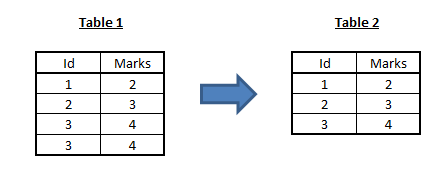Magic is a performing art that entertains audiences by staging tricks or creating illusions of seemingly impossible or supernatural feats using natural means (Source : Wikipedia) . If you understand the last sentence, you will have no challenge leveraging MapReduce routine for solving any kind of data manipulation challenge. In the last two articles, we gave an Introduction to Hadoop and MapReduce. We saw that Map-Reduce can handle big data but has a stringent format. It can only structure data using Mapper and summarize data using the reducer. This article will help you understand how to “trick” Hadoop to see different kind of data manipulation functionality as simple MapReduce function.
Note that this article talks only about MapReduce used along with HDFS, it does not talk about packages such as PIG, HIVE, etc. Using these packages, you might not have to use these “tricks” because these packages will enable you to build simple SQL queries. But as of now, such packages are not widely used and most industries are using the basic Hadoop tool (MapReduce with HDFS).
[stextbox id=”section”] The analogy [/stextbox]
Let’s analyze a situation to better understand this MapReduce functionality.
“Magician prepares for a new trick. Now, he shows a trick to the audience. Audience only looks at what Magician wants to show them. “
Let’s analyze this situation with reference to MapReduce.
Following are the role-play :
Magician : User
Audience : Hadoop
Trick : Data manipulation functionality
Now let’s replace the words used in the last sentence with mapped Hadoop jargons.
“User prepares for a new data manipulation functionality. Now, he (user) executes the data manipulation functionality on Hadoop. Hadoop only looks at what user wants to show to the Hadoop (MapReduce type function).”
Let us demonstrate the concept by taking a few examples – Show time!
[stextbox id=”section”] Example 1 : Word Count [/stextbox]
You have a bunch of text files in your system and would like to count the overall number of occurrences of each word. This example has already been covered in the last article.
- Map: For each distinct word, generate a key value pair of (word,1)
- Shuffle: For each key (word) w, produced by any of the Map tasks, there will be one or more key-value pairs (w,1). Then, for key w, the shuffle will produce (w, [1, 1,…, 1]) and present this as input to a reducer.
- Reduce: the reducer associated with key (word) w turns (w, [1, 1, …, 1]) into (w, n), where n is the sum of the values. Note that the reduce phase produces exactly one output pair for each key w.
[stextbox id=”section”] Example 2 : Removing Duplicates [/stextbox]
We basically would like to implement the distinct operator: the desired output should contain all of the input values, but values that appear multiple times in input, should appear only once in output.
The solution is simpler than that of word count problem: we use the value itself as the map output key; the reducer associated with a specific key, can then return a single output.
- Map: For each input value id and marks , output the key-value pair (key = id , value = (id,marks))
- Shuffle: For each key id produced by any of the Map tasks, there will be one or more key-value pairs . Then, for key id, the shuffle will produce (id, [(id,marks) , (id,marks)…]) and present this as input to a reducer.
- Reduce: the reducer for key id turns (id, [(id,marks) , (id,marks)…]) into single (id, (id,marks), so it produces exactly one output (id,marks) for this key id.
Note that Reducer can select the (id,marks) pair based on any logic. For instance, we might want to know the highest marks scored by any student. In this case, we will take the maximum of all marks on every id.
[stextbox id=”section”] Example 3 : Matrix transpose [/stextbox]
Here we just want to transpose a matrix. Matrix transposition simply means that every element (row, column) comes to the position (column , row).

Let us denote each of these value with a row,column index. For instance 1 will (1,1), 2 will be (1,2) etc.
- Map: For each input (x,y) , generate key as (y,x) and values as the actual value in matrix. For instance 4 will be taken as (key=(1,2),value=4)
- Shuffle: As there is a single value for every key, shuffle phase doesn’t have any significant role. However, it will sort all the values as per the key.
- Reduce: The reducer will directly return the values by accepting all the keys as (row,column) for the matrix.
[stextbox id=”section”] Example 4 : Merging tables [/stextbox]
Merging tables is the most frequent data manipulation used in analytics industry. We have two tables : table 1 & table 2. They both have a common variable (id variable) called Name. We need to merge the two tables and find marks corresponding to each names.
 First step in this process is to append the two tables together. Then follow the algorithm given below :
First step in this process is to append the two tables together. Then follow the algorithm given below :
- Map: For each input of table 1 , generate key as ‘id’ and values as ,(“tab1”,id,marks) & for each input of table 2 , generate key as ‘id’ and values as ,(“tab2”,id,marks) . For instance (2,34) will be taken as (key=2,value=(“tab1”,2,34))
- Shuffle: The shuffle phase will bring all the same id together. You can identify the ownership of each row by the first argument in value.
- Reduce: The reducer has to be deigned in such a way that for each id with first argument as “tab1”, find all the matches on id with first argument as “tab2” and combine them to single row.
- Note that this algorithm will create a Cartesian product of the input matrix.
[stextbox id=”section”] End Notes [/stextbox]
The list of examples listed in this article is not exhaustive. We need to change the way we look at data manipulation task on Hadoop. We need to start thinking in terms of (key,value) pairs. We saw in this article that Hadoop does restrict the way of coding for the user, but even this restricted style of coding can be exploited to execute several data manipulation processes.
Before I end this article, here is something to scratch your brains: How can you implement matrix multiplication in Hadoop? Do let me know your thoughts / answers / questions / challenges on usage of MapReduce for data manipulation through the comments below.








Hi Vidhya, How can you do the Matrix transpose using hadoop or pig or Hive? Here we just want to transpose a matrix. Matrix transposition simply means that every element (row, column) comes to the position (column , row). 123 456 789 to 147 258 369 Thanks in advance.